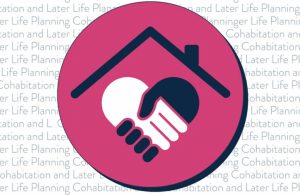31st October 2023
Residential Property FAQs

I am thinking of buying a retirement property. Are there any differences between these and other freehold or leasehold properties?
Retirement properties often have the benefit of a manager on hand for any emergencies. There is also a social element for those persons who would like more social interaction, usually with various events and activities planned, shared social areas on site, and so on. In exchange, there is a service charge payable for the upkeep of the shared areas and the cost of maintenance. In some instances, there is a ground rent payable as well, for example, with leasehold retirement properties. You should also be aware that in many leases or transfer documents for retirement properties a ‘contingency fee’ and/or ‘transfer fee’ is payable on transfer or re-sale of the property in future. These fees are payable to the landlord and can range from 1% to upwards of 15% so do check from the outset to make sure you are aware of all charges payable during your ownership and on re-sale in future.
My current property is on the market, but I wish to proceed with purchasing a new property before selling my existing home. My house is in my sole name, but the new property will be bought in joint names with my husband who does not own any other property. Would I have to pay the higher rates of Stamp Duty Land Tax against the full purchase price or only on my half share of the property? Would I be able to claim this back in future?
Currently, if you purchase a new main residence without selling your existing one, you are liable to pay the higher rate of Stamp Duty Land Tax (‘SDLT’) which is 3% of the purchase price. This is payable in addition to the standard SDLT rates for the purchase.
You have indicated that your spouse does not own a share in your current residence. Unfortunately, the rules apply to both of you, so the 3% higher rate of SDLT will apply.
If you sell your current home within 3 years of purchasing your new home, you can apply for a refund subject to HMRC’s terms and conditions.
I will be selling my property which is also my main residence. As part of the sale there is an outbuilding converted to an annexe or holiday cottage and I have been renting this out for short term holiday lets. Is there anything I should be aware of?
You may be liable to pay Capital Gains Tax (‘CGT’) on the holiday cottage and it is advisable to speak with an expert in CGT at an early stage so that you are fully aware of your tax liability which must be paid within 60 days of completion.
You may also have to arrange a separate Energy Performance Certificate for the holiday cottage.
I am buying a property which has a separate building which has been converted to an annexe. What should I be considering?
You should ask to see the Energy Performance Certificate for the annexe as well as the main building. If you intend on renting out the annexe, in addition to any planning consent, you must ensure that the EPC rating is ‘E’ or above. There are some exemptions which can be found on the GOV.UK website.
You should ask whether any of the services for the annexe are separate, where meters are located and whether any services are shared. You should discuss your future plans for the property with your conveyancer who will be able to ask relevant questions of the seller’s solicitors.
You may be able to make a claim to HMRC on purchase for Stamp Duty Land Tax relief called Multiple Dwellings Relief. This is subject to certain rules, and you would need to again speak with your conveyancer who will be able to advise based on the facts whether your claim may be successful. In complex cases, or where the information available is unclear, your conveyancer may suggest that you speak with an accountant or other professional to provide you with the information necessary to decide if an application for Multiple Dwellings Relief would be appropriate.
